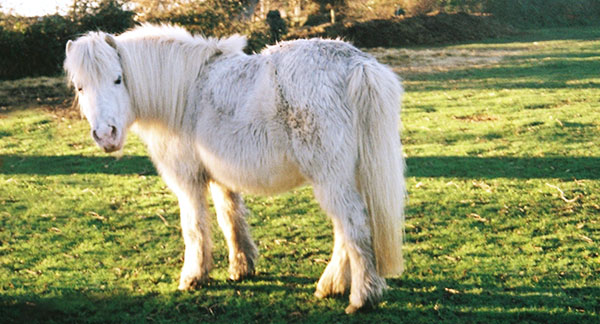
What’s the deal with PPID?
I’m sure we have all driven by the old pony in the paddock with a swayed back, and a long curly coat, on a beautiful summer day. What used to be commonly known as Cushing’s, is now better understood as PPID, Pituitary Pars Intermedia Dysfunction. In affected horses the pars intermedia, a part of the pituitary gland at the base of the brain, is enlarged due to a hormone secreting tumour. This tumour, not usually neoplastic, causes an enlarged and overactive pituitary that produces an excess amount of hormones. The most important ones being produced are: pro-opiomelanocortin (POMC) and its derivative, adrenocorticotropic hormone (ACTH). These hormones stimulate the adrenal glands to produce large amounts of stress hormones that are normally produced at low, frequent levels. Sustained release of these hormones is what causes many of the clinical signs that we are able to see in horses affected by PPID.
Why are we seeing PPID so much more? That’s an easy one to explain. Horses are living longer than ever due to advancements in medical care, nutrition and husbandry. The median age of horses diagnosed with PPID is between 15-24 years old. It’s estimated that 15-30 % of horses over the age of 15 suffer from PPID (that’s roughly 1 in 7 horses!!).
What do I look for? This one isn’t quite as easy to answer since it is so variable in the early stages of PPID. It can present as simply as a decrease in athletic performance, a change in attitude, or an increase in water consumption with an increased frequency of urination. What makes it harder is that there are many other injuries or illnesses that can cause these vague clinical signs. As a horse enters the advanced stages of PPID it is much easier to associate the clinical signs with the illness. We are often presented with the classic non-shedding shaggy winter coat that sticks around well past its welcome, muscle loss over the topline, laminitis, recurrent infections, abnormal fat deposits and infertility. Did you know that up to 70% of mature horses seen by a veterinarian for laminitis have been found to have PPID? Seems fairly straight forward at this point doesn’t it? Except for the fact that not only can we have PPID, but horses are sometimes doubly affected by something else called EMS (Equine Metabolic Syndrome). So why is this important? Having a horse that has EMS is a risk factor for developing PPID. Horses can easily have both PPID and EMS at the same time! What do we look for with EMS? We can often see regional fat deposits, laminitis and insulin resistance. That doesn’t simplify much either, does it? So where do owners go from here? Well, knowing your horse and recognizing these subtle changes are key for diagnosing and treating these issues early on. Talk to your veterinarian! We can help. With a co-operative patient and a sample of blood we can easily send this away to the laboratory for testing. Within a couple of days, we have an answer and can begin treatment.
Treatment …… What does this mean for me? My horse? Thankfully treatment is fairly straight forward for both PPID and EMS. Should your horse have PPID, a once a day pill called “Pergolide” (also known by its brand name “Prascend”), is administered in feed. Pergolide is available through your veterinarian. For EMS dietary management is required. Dietary management includes a strict restriction of carbohydrates. Horses should be limited to good quality forage and fiber based feedstuffs fed at roughly 1.0-1.5% of bodyweight per day. Fresh pasture is a big “no no” and often times grazing muzzles need to be implemented into the plan. For horses with both PPID and EMS a combination of pergolide and dietary restrictions must be implemented into the daily lifestyle of the affected horse.
Dr. Danielle Thibault
